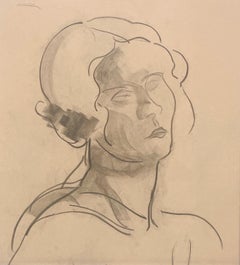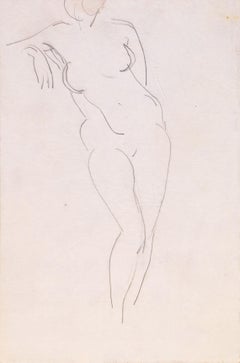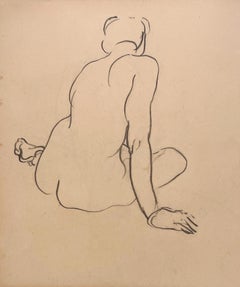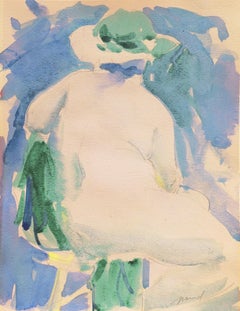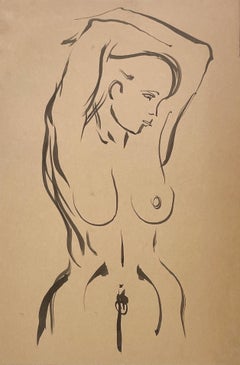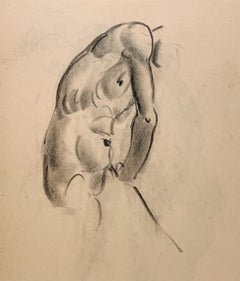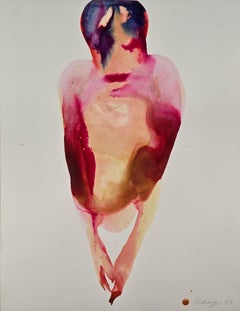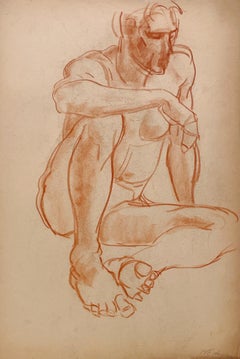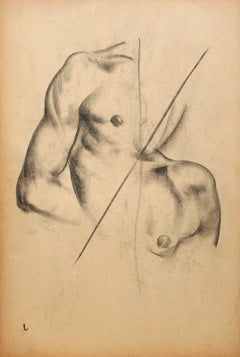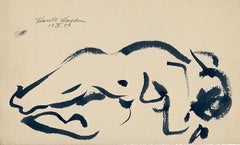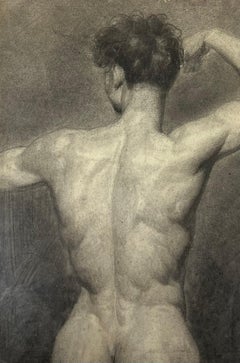Nude Drawings and Watercolors
1930s American Modern Nude Drawings and Watercolors
Charcoal, Paper
2010s Contemporary Nude Drawings and Watercolors
Paper, Ink
1930s American Modern Nude Drawings and Watercolors
Pastel, Paper
1930s American Modern Nude Drawings and Watercolors
Paper, Charcoal
Mid-20th Century American Modern Nude Drawings and Watercolors
Paper, Ink
19th Century Post-Impressionist Nude Drawings and Watercolors
Charcoal
20th Century Impressionist Nude Drawings and Watercolors
Ballpoint Pen
2010s Contemporary Nude Drawings and Watercolors
Paper, Ink, Tempera
2010s Contemporary Nude Drawings and Watercolors
Ink, Linen, Pen
Mid-20th Century Post-Impressionist Nude Drawings and Watercolors
Charcoal, Pencil
2010s Contemporary Nude Drawings and Watercolors
Conté, Charcoal, Archival Paper, Graphite
2010s Contemporary Nude Drawings and Watercolors
Conté, Charcoal, Archival Paper, Graphite
16th Century Old Masters Nude Drawings and Watercolors
Ink
2010s Contemporary Nude Drawings and Watercolors
Tempera, Pencil, Paper
Mid-20th Century American Modern Nude Drawings and Watercolors
Paper, Ink
2010s Contemporary Nude Drawings and Watercolors
Paper, Tempera
2010s Contemporary Nude Drawings and Watercolors
Conté, Charcoal, Archival Paper, Graphite
Mid-20th Century American Modern Nude Drawings and Watercolors
Paper, Charcoal
2010s Contemporary Nude Drawings and Watercolors
Ink, Paper, Watercolor
2010s Contemporary Nude Drawings and Watercolors
Pastel, Watercolor, Paper, Ink
Mid-20th Century American Modern Nude Drawings and Watercolors
Paper, Ink, Watercolor
2010s Contemporary Nude Drawings and Watercolors
Linen, Ink, Pen
2010s Modern Nude Drawings and Watercolors
Archival Paper, Charcoal, Graphite
Late 20th Century Pop Art Nude Drawings and Watercolors
Paper, Charcoal, Carbon Pencil
1840s Academic Nude Drawings and Watercolors
Charcoal, Paper, Pencil
1930s American Modern Nude Drawings and Watercolors
Paper, Charcoal
2010s Modern Nude Drawings and Watercolors
Charcoal, Crayon, Graphite
1960s Modern Nude Drawings and Watercolors
Ink
1930s American Modern Nude Drawings and Watercolors
Charcoal, Paper
Mid-20th Century Impressionist Nude Drawings and Watercolors
Ink
Early 19th Century Academic Nude Drawings and Watercolors
Paper, Charcoal, Pencil
2010s Contemporary Nude Drawings and Watercolors
Paper, Acrylic, Cardboard
1960s Other Art Style Nude Drawings and Watercolors
Paper, Felt Pen, Gouache
1930s American Modern Nude Drawings and Watercolors
Paper, Charcoal
1920s Nude Drawings and Watercolors
Watercolor
2010s Contemporary Nude Drawings and Watercolors
Archival Paper, Tempera
2010s Contemporary Nude Drawings and Watercolors
Conté, Charcoal, Archival Paper, Graphite
2010s Contemporary Nude Drawings and Watercolors
Linen, Ink, Pen
20th Century Impressionist Nude Drawings and Watercolors
Watercolor
17th Century Baroque Nude Drawings and Watercolors
Archival Paper
1840s Academic Nude Drawings and Watercolors
Paper, Charcoal, Pencil
Late 19th Century Impressionist Nude Drawings and Watercolors
Graphite
2010s Contemporary Nude Drawings and Watercolors
Tempera, Carbon Pencil, Rag Paper
2010s Modern Nude Drawings and Watercolors
Charcoal, Graphite, Paper
1960s Modern Nude Drawings and Watercolors
Ink
2010s Contemporary Nude Drawings and Watercolors
Tempera, Pencil, Archival Paper
Mid-20th Century American Modern Nude Drawings and Watercolors
Paper, Ink
Early 1900s Vienna Secession Nude Drawings and Watercolors
Charcoal
2010s Contemporary Nude Drawings and Watercolors
Conté, Charcoal, Archival Paper, Graphite
1950s American Modern Nude Drawings and Watercolors
Graphite, Paper
2010s Contemporary Nude Drawings and Watercolors
Tempera, Archival Paper, Pencil
Late 20th Century Academic Nude Drawings and Watercolors
Pastel
Early 2000s Realist Nude Drawings and Watercolors
Chalk, Pastel, Pencil, Cardboard
1930s American Modern Nude Drawings and Watercolors
Paper, Pastel
16th Century Old Masters Nude Drawings and Watercolors
Ink
2010s Contemporary Nude Drawings and Watercolors
Tempera, Archival Paper
Mid-20th Century American Modern Nude Drawings and Watercolors
Paper, Charcoal, Pastel
1980s Academic Nude Drawings and Watercolors
Conté, Archival Paper
2010s Modern Nude Drawings and Watercolors
Conté, Graphite
Early 20th Century Impressionist Nude Drawings and Watercolors
Charcoal
Shop Nude Drawings and Watercolor Paintings
The human body has long been a favorite subject for artists throughout history. Nude drawings and watercolor paintings reveal the human figure but also the social ideals, traditions and cultural beliefs around people and bodies at the time they were created.
Nude drawings and watercolors offer a unique way to illustrate the human body. Drawings in pencil or ink can quickly capture movement or poses while watercolor is more expressive of a moment. Different cultures utilize the same materials differently, and each piece provides a singular glimpse into the perspectives and expectations around people’s bodies.
Artists like Francisco Goya, Gustav Klimt and Lucian Freud — who painted his friends, his lovers and his children — found acclaim and success by creatively depicting the human body. More recently, as contemporary artists have followed the figurative muse, many painters are exploring the nude as a subject for their drawings and works in watercolors.
If you’re thinking about bringing this kind of work into your space, there are many ways to consider how to arrange wall art in your living room or elsewhere in your home. Creating a wall of art is a wonderful way to enhance your space, showcase beautiful pieces and tie an interior design vision together. It allows you to evoke emotions in a room while also showing off your tastes and interests.
On 1stDibs, find a collection of nude drawings and watercolor paintings for diverse views and attitudes toward the human form through a range of cultures and times.
